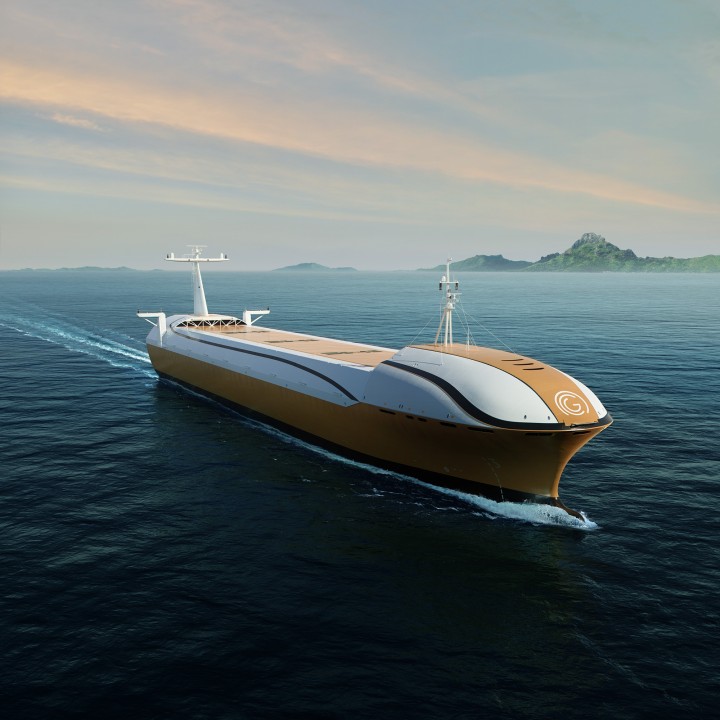In the continuously changing realm of technological progress, the maritime industry is experiencing a significant change with the introduction of autonomous shipping. In a world that is becoming more interconnected, various sectors are actively exploring creative methods to boost effectiveness, cut costs, and improve risk management. The rise of autonomous shipping, driven by progress in artificial intelligence and robotics, promises a substantial transformation in the transportation of goods across the oceans. This piece delves into the fundamental aspects of autonomous shipping, exploring its potential benefits, challenges, and the envisioned future it holds for the maritime industry.
Autonomous shipping refers to the utilization of unmanned vessels equipped with cutting-edge technologies to navigate and transport goods across water routes. These ships depend on a blend of sensors, cameras, radar, lidar, and sophisticated algorithms to swiftly make decisions, guaranteeing collision avoidance and adherence to global maritime regulations. The aim is to establish a transportation method that emphasizes safety, efficiency, and sustainability.
Technologies in Autonomous Shipping
Sensor Integration
Automated vessels employ a range of sensors like radar, lidar, and cameras to comprehend their surroundings and make knowledgeable decisions concerning navigation and steering clear of potential collisions.
Artificial Intelligence and Machine Learning
AI technologies process data from sensors, enabling ships to adapt to changing conditions, optimize routes, and make complex decisions. Machine learning algorithms enhance the vessel’s ability to learn and improve over time.
Remote Operation
Advancements aim to develop Maritime Autonomous Surface Ships (MASS) that can be operated remotely without a crew onboard. This goal contributes to increasing efficiency and reducing operational costs.
Situational Awareness and AI-Enabled Systems
Recent successes in autonomous shipping trials coincide with improvements in situational awareness and AI-enabled systems. These advancements enhance the safety and reliability of autonomous vessels (“How Autonomous ships are revolutionizing the maritime industry?”)
Challenges and Considerations
Operational Challenges
Unmanned vessels need to navigate various operational challenges, including unpredictable weather conditions, congested waterways, and the ability to handle emergencies without human intervention. (“Autonomous shipping”)
Technological Maturation
The technology behind autonomous shipping is still evolving. Advancements in artificial intelligence, sensor capabilities, and communication systems are necessary for the widespread adoption of autonomous vessels. (“Revolution of Autonomous shipping”)
Cybersecurity Risks
As vessels become more connected, the risk of cyber threats increases. Ensuring the security of onboard systems to prevent hacking and data breaches is a critical challenge.
High Initial Costs
The implementation of autonomous technology requires a substantial initial investment. The cost of retrofitting existing vessels or building new autonomous ships can be a barrier to widespread adoption.
Public Perception and Trust
Gaining public acceptance and trust in autonomous shipping is crucial. Convincing stakeholders, including maritime professionals and the general public, of the safety and reliability of unmanned vessels remains a challenge.
Effects of Autonomous Shipping
Restructuring of Maritime Workforce
While the benefits of autonomous shipping are undeniable, the industry’s transition to self-driving vessels may result in a restructuring of the maritime workforce. As automation takes over routine tasks, the demand for traditional maritime roles, such as ship captains and helmsmen, may diminish. However, this shift also presents opportunities for the creation of new positions focused on managing and maintaining autonomous vessels. As the industry evolves, it will be crucial to ensure a smooth transition for those affected, providing retraining and upskilling opportunities to embrace the changing landscape.
Streamlined Maintenance and Repair
Autonomous shipping also presents opportunities for streamlined maintenance and repair processes. In the traditional shipping industry, ships often require significant downtime for inspections, repairs, and equipment replacements. With autonomous vessels, onboard sensors and machine learning algorithms can continuously monitor the ship’s condition, detecting and addressing issues before they become critical. This proactive approach to maintenance can minimize costly downtime and optimize overall operational efficiency.
Enhanced Risk Assessment and Collision Avoidance
Autonomous ships bring a new level of sophistication to risk assessment and collision avoidance. By utilizing advanced sensors and real-time data analysis, these ships can detect and respond to potential hazards more effectively than traditional manned vessels. From detecting other ships to avoiding icebergs, autonomous vessels can make instantaneous decisions based on data-driven analysis, ensuring the safety of both the crew and cargo.
Despite the obstacles, the outlook for autonomous shipping holds promise. Key figures in the industry and stakeholders are actively working together to tackle regulatory, technological, and societal issues. Initiatives involving pilot projects and trials are currently in progress to assess the practicality of autonomous vessels in various maritime settings.
As the technology advances and gains wider acceptance, a gradual shift toward mainstream adoption of autonomous shipping seems inevitable. This progression carries the potential to transform global trade, enhancing efficiency, sustainability, and resilience to external challenges.
In conclusion, autonomous shipping signifies a transformative change in the maritime sector, offering improved safety, operational efficiency, and environmental sustainability. While challenges like adapting regulations, ensuring cybersecurity, and managing public perception persist, the ongoing advancements and collaborative efforts signal a promising future for unmanned vessels navigating the seas. As the world steers towards an autonomous future, the maritime industry is poised to explore new horizons with innovation leading the way.

